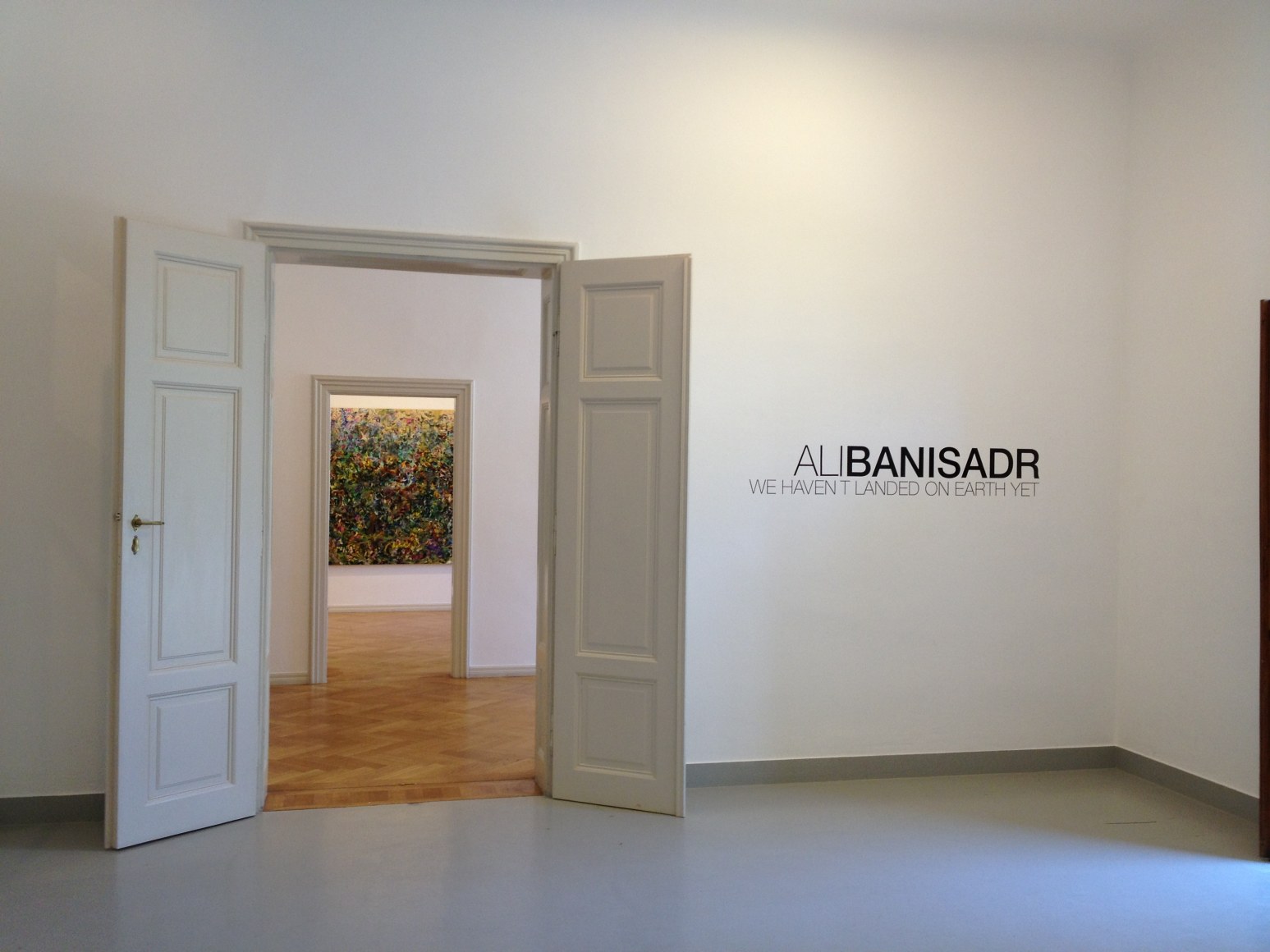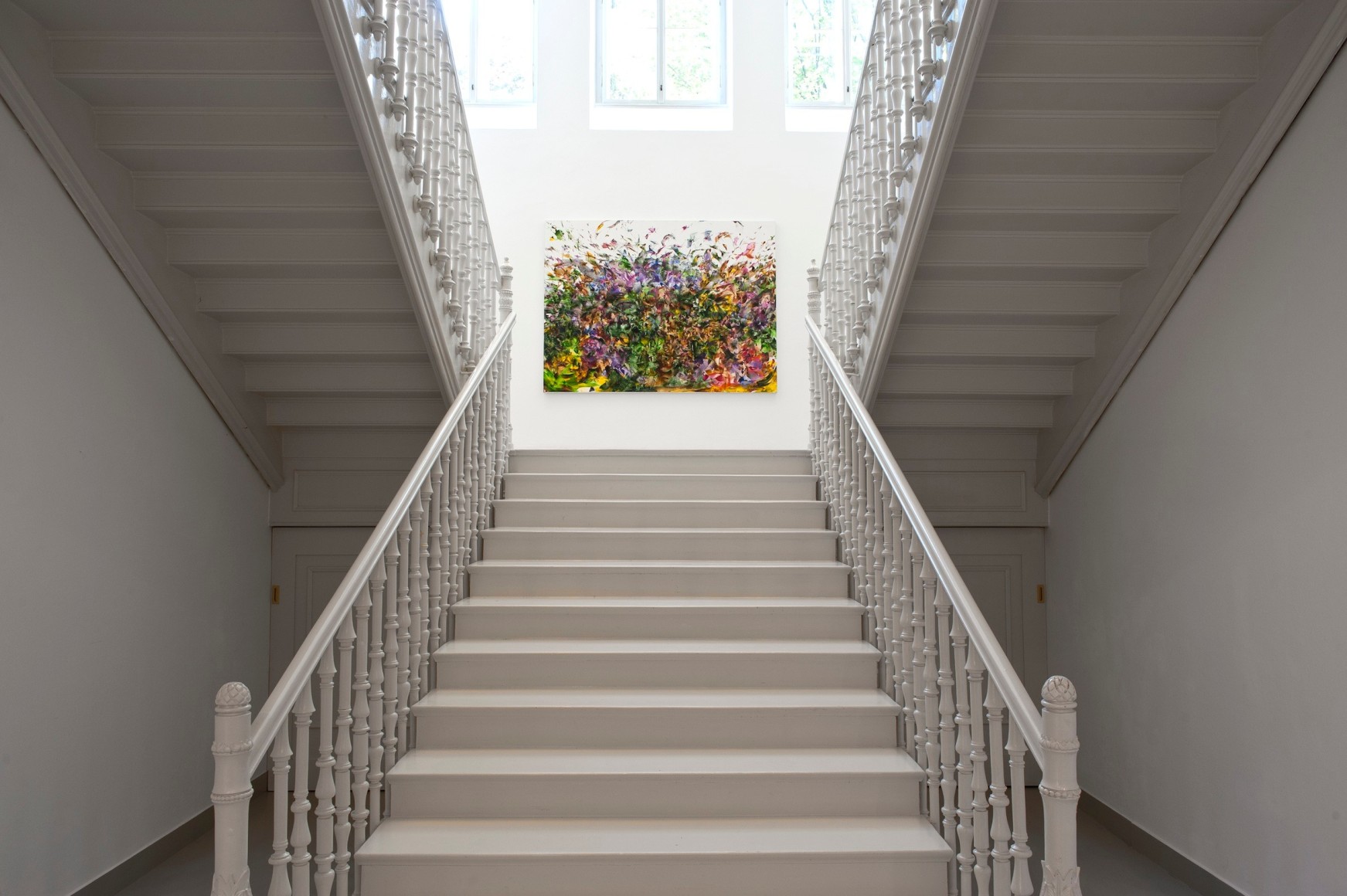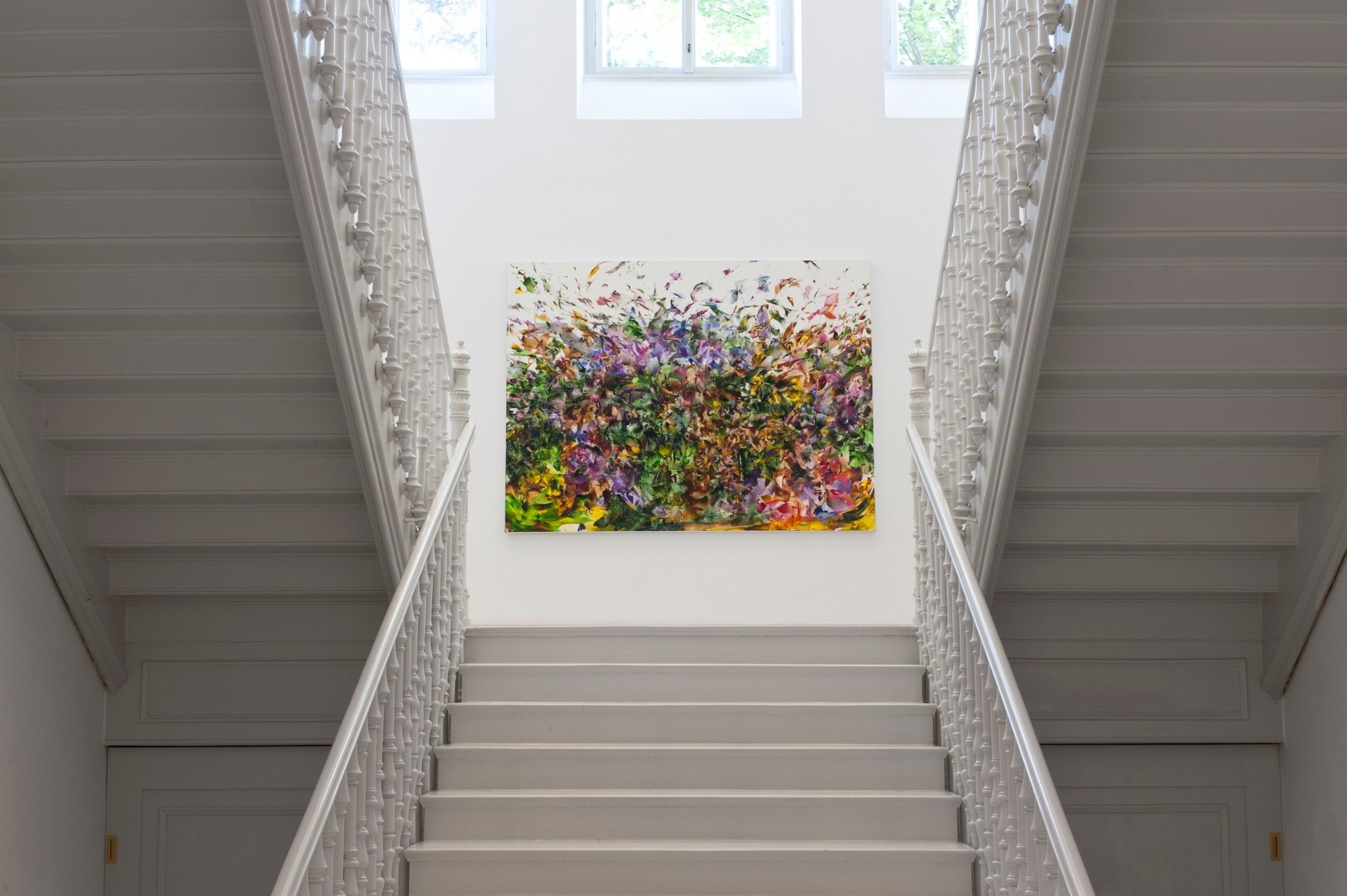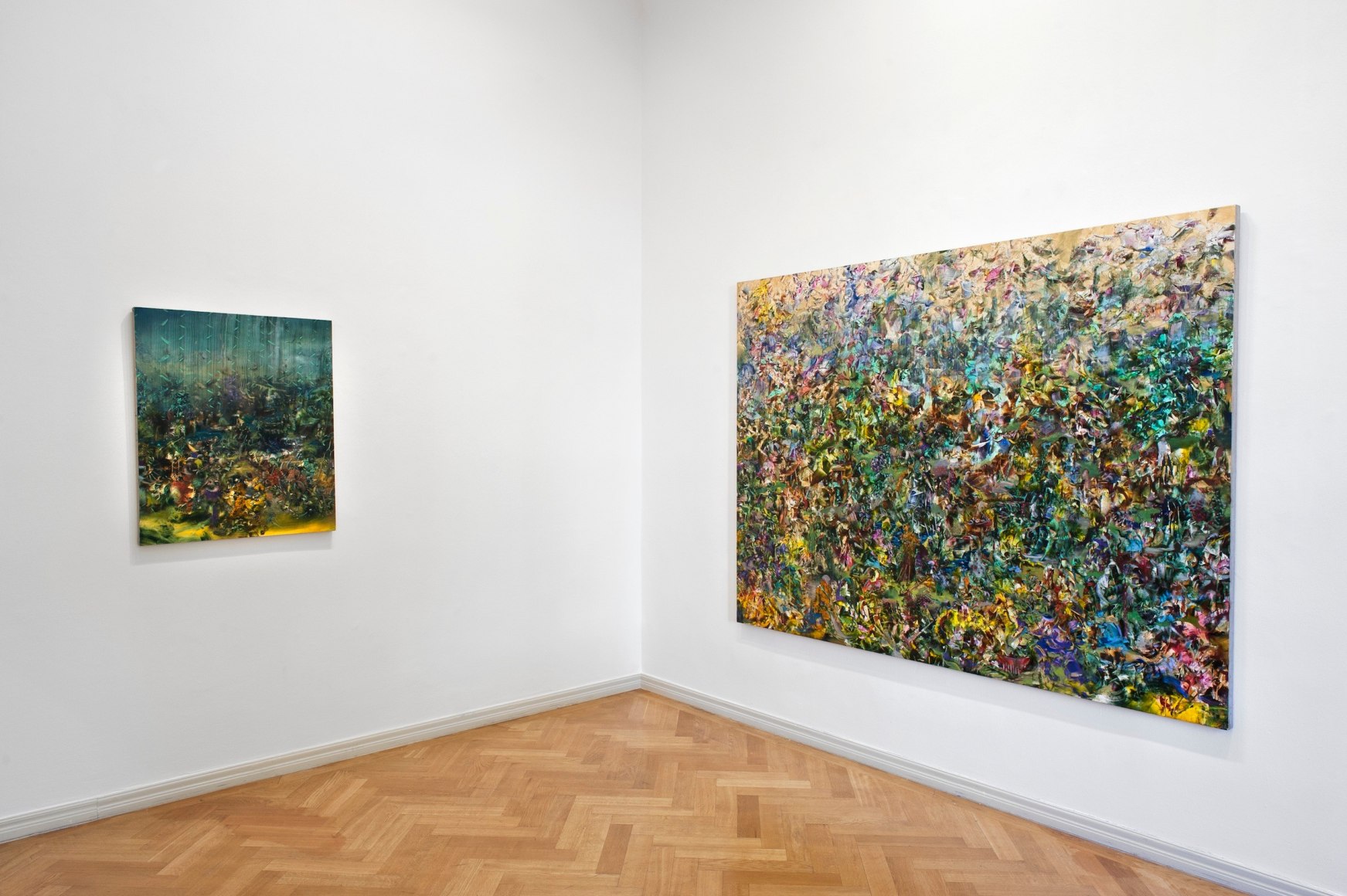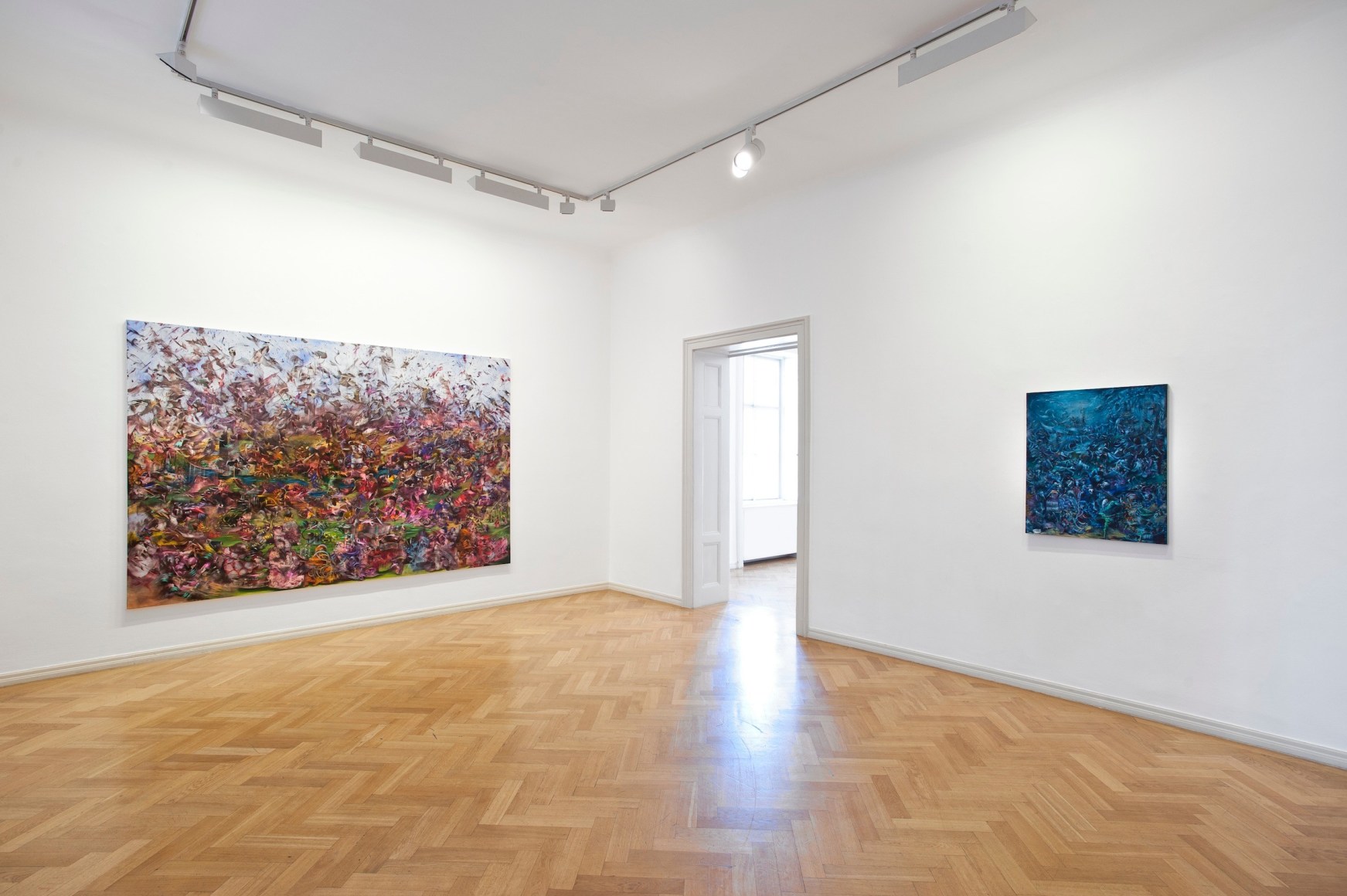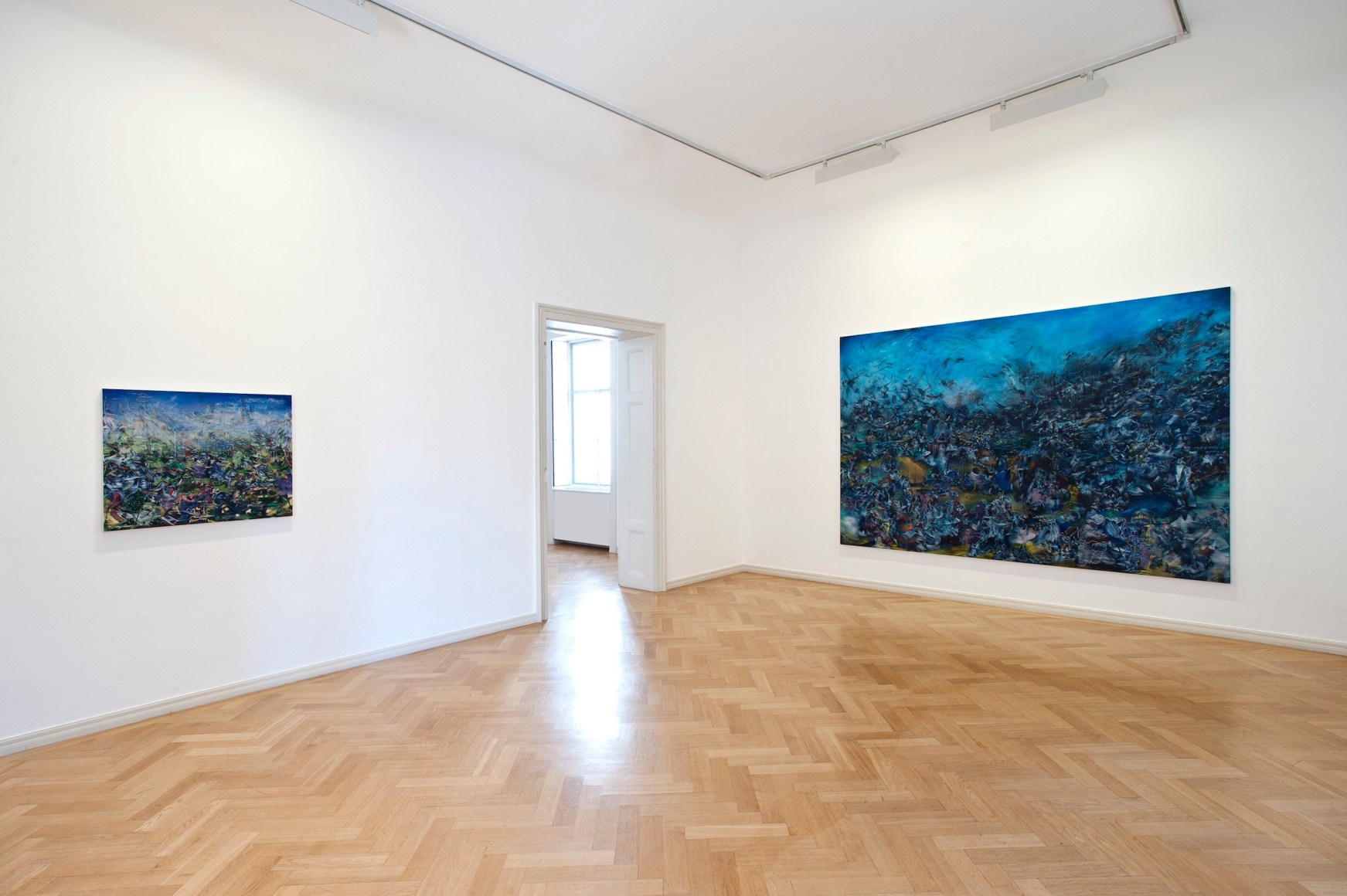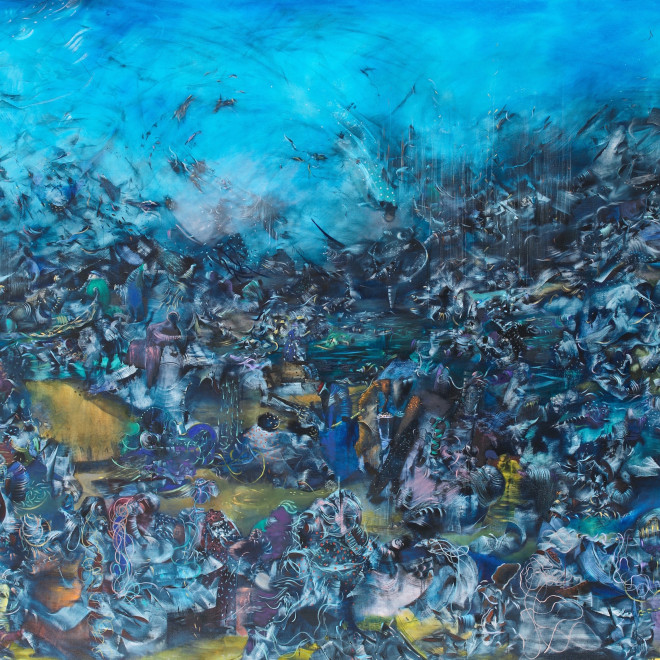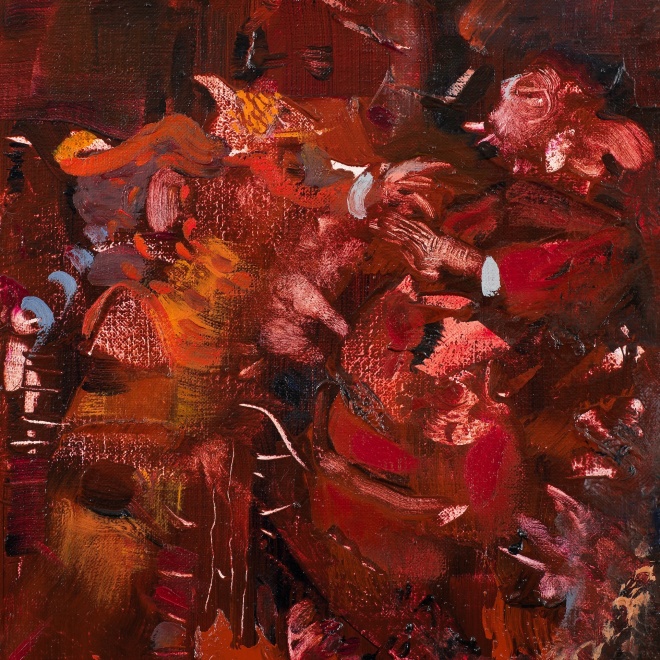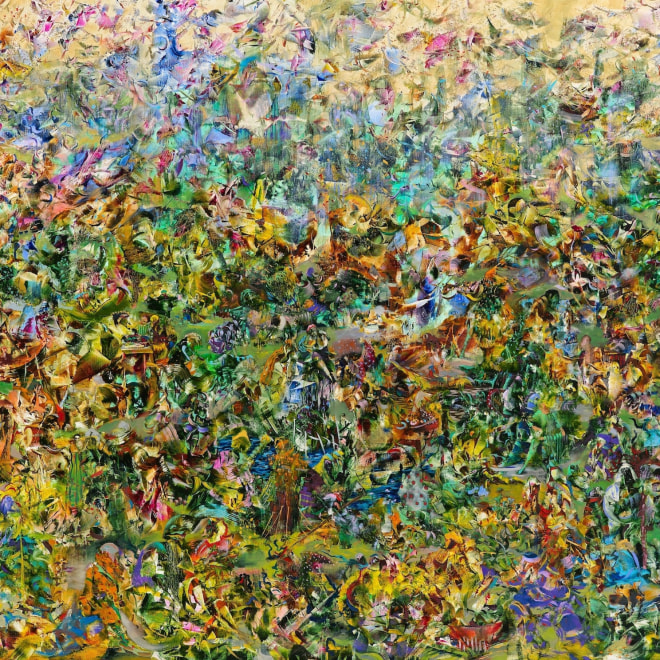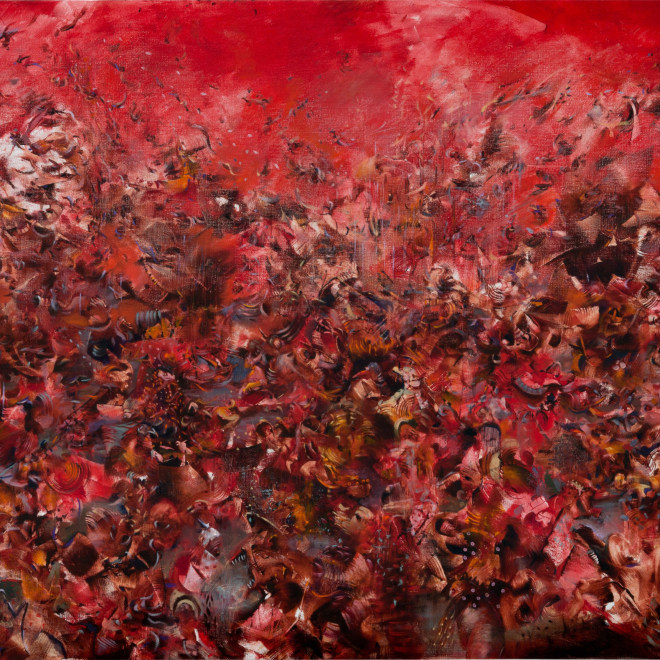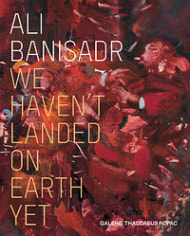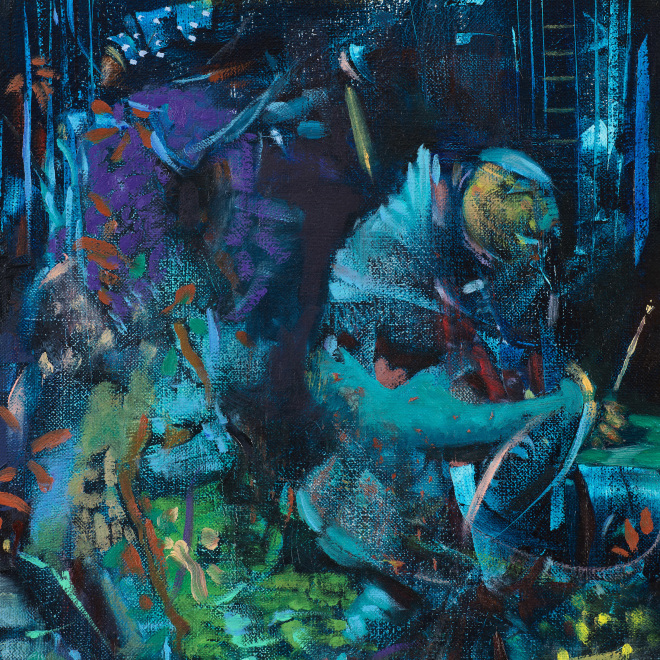
Galerie Thaddaeus Ropac is delighted to present the latest works of New York based Iranian artist, Ali Banisadr. Annunciation, The visitors, History… These are the titles of Ali Banisadr’s paintings which oppose the explicit character of their references to their lavishly detailed, profusely coloured and apparently abstract surfaces. What could be the link between these soft balanced and subtly dynamic compositions, marked by sequenced movement, delicately juxtaposed and interpenetrating paintings?
In order to identify the connections between the titles and the images of the displayed works, the viewer must yield to the evidence that the artist has blurred his tracks to create an invitation to one’s own imagination, That is,an invitation to renew his visual and psychological references.
Space, place and time appear to be well rendered, while the title, the action of colours and the movement contained within these works function as clues, which instigate a dialogue between memory and emotion. It is in this sense that the work of Ali Banisadr tends to create a universal experience.
As in the futurism codes, the point of view is deconstructed, fragmented and multiplied; creating at first confusion until it finally conveys a more complete vision of the subject. These paintings are also reminiscent of Picasso’s early cubist period, which was marked by analytical works that deconstructed the perception of the world and the objects in it in order to enable the idea of a single point of view and to eventually better render their essence.
According to Ali Banisadr, the work entitled We Haven’t Landed On Earth Yet was inspired by the Biography of Willem De Kooning, who liked to take liberties from reality without giving up representation. The title was de Kooning’s response to the announcement of the first lunar landing. In that context, it was the expression of a wonder at a human race, capable of this fantastic exploit, without having found the reason for its presence on planet Earth.The faraway and almost aerial point of view is not to be seen as a distance between the viewer’s eye and the works but rather as a vantage that leads to highlights details that we might have missed, preventing us from perceiving the events in their entirety.
In breaking up the narrative process while adopting a more distant point of view, Ali Banisadr evokes the attitude of the human race towards its own history. Melencolia I is a fully assumed reference, implying that the artist is sharing Albrecht Dürer’s fascination for universality and the pretention of the unrealistic humanist quest to attain the core of conscience through knowledge.
Born in Tehran in 1976, Ali Banisadr moved to the US when he was 12 years old. He studied psychology and was involved with Graffiti art while living in San Francisco. He moved to New York in 2000 and obtained his BFA from School of Visual Arts in 2005 and a MFA from New York Academy of Art in 2007. Banisadr has been in several Museum group shows including Queens Museum of Art in NY, S.M.A.K in Belgium, Gemeente Museum in Netherlands and The Metropolitan Museum of Art . His works are in the Wurth Collection, Essl collection, Pinault Collection, Olbricht Collection, Saatchi collection, The British Museum UK and The Metropolitan Museum of Art in NY. In 2011 Banisadr was ranked number one in Flash Art international magazine’s top 100 artists survey. His work is currently on view at the Metropolitan Museum of Art until September 2012.
For the exhibition We Haven’t Landed On Earth Yet, a catalogue will be published with articles by Maryam Ekhtiar (Senior Research Associate in the Department of Islamic Art, Metropolitan Museum of Art, New York) and Greg Lindquist.

